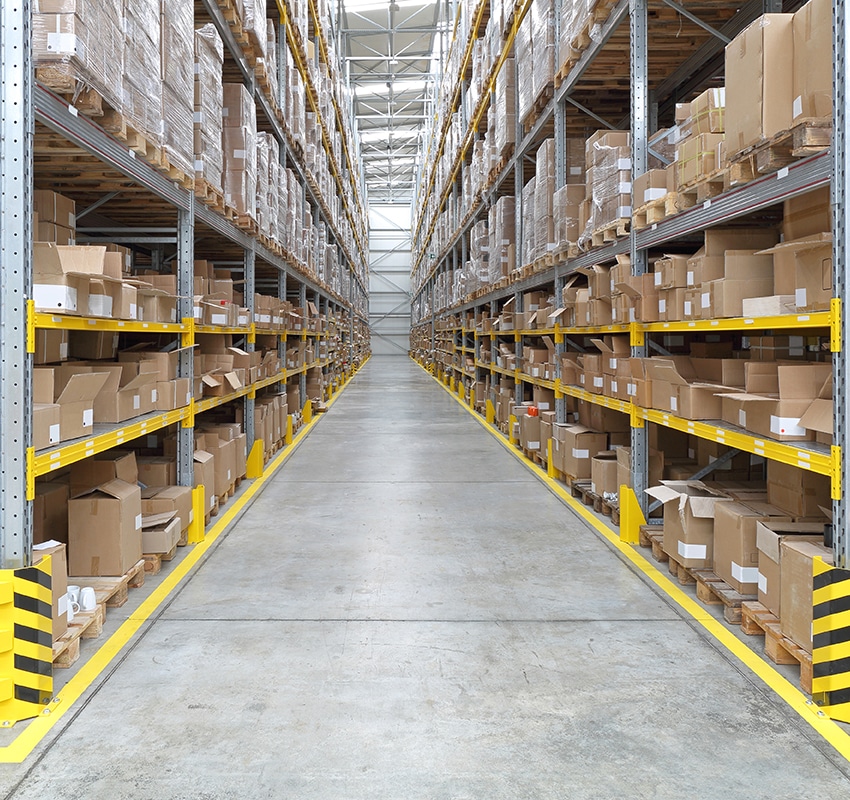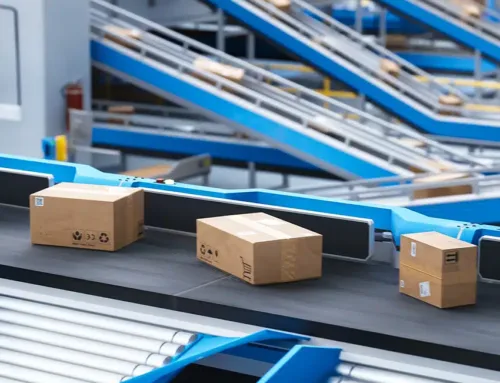Amazon FBA vs. Dropshipping
Are you torn between Amazon FBA vs. Dropshipping? When considering cost, inventory management, and control over customer experience, these are the fundamental differences you’ll need to weigh. In this article, we delve into the contrasts and parallels of both fulfillment methods to provide you with a clear perspective, without any unnecessary fluff. Whether you’re a seasoned seller or new to e-commerce, our aim is to lay out the facts to help you determine which model best aligns with your financial and operational goals.
Key Takeaways
- Amazon FBA involves using Amazon’s fulfillment centers for packaging, shipping, and customer service, providing wide customer reach and Prime shipping benefits, but entails high costs and upfront inventory investment.
- Dropshipping is a low-startup-cost model where the seller does not hold inventory but instead forwards customer orders to suppliers to ship directly, offering flexibility and a diverse product range but potentially facing lower profit margins and issues with product quality and supplier reliability.
- The choice between Amazon FBA and Dropshipping depends on business needs and resources. Amazon FBA requires more upfront investment and offers less branding control, while Dropshipping has lower barriers and allows for more customization. A hybrid approach can combine the advantages of both.
Understanding Amazon FBA
Starting with Amazon FBA, which is short for Fulfillment by Amazon, this service significantly reduces the challenges of product storage and delivery associated with running an e-commerce business. The process operates as follows: store owners send their merchandise to a designated Amazon fulfillment center. Upon customer purchase, Amazon not only handles packaging and dispatching the order but also manages customer service inquiries and processes returns.
Imagine it as hiring a dedicated assistant for your e-commerce business, offering a personalized helping hand crafted to cater to the unique needs of online entrepreneurs!
Pros of Amazon FBA
Amazon FBA presents numerous advantages, including immediate access to Amazon’s vast customer base, which encompasses Prime subscribers. The organic traffic generated by Amazon’s extensive market presence and integration within the Amazon Marketplace can significantly enhance your business’s customer reach.
Shipping is streamlined through FBA, with your products qualifying for Prime shipping benefits such as complimentary two-day delivery. As part of its services, Amazon handles both customer service tasks and logistics related to returns and refunds.
Cons of Amazon FBA
Despite its advantages, Amazon FBA comes with a significant cost factor. The array of fees associated with this service includes:
- Monthly subscription fees
- Referral commissions on each sale
- Charges for inventory storage
- Fulfillment charges for order processing
The cumulative effect of these expenses can considerably reduce profit margins. Additionally, the potential accumulation of unsold stock poses a financial risk.
Embarking on an Amazon FBA venture requires an initial capital outlay for inventory, which can be particularly challenging for newcomers in the marketplace.
Understanding Dropshipping
Shifting our focus to the Dropshipping business model, it’s important to note that this approach varies significantly from Amazon FBA. Under the Dropshipping model, you operate as a retailer without maintaining any stock on hand. When customers place orders, you simply forward those orders along with shipping information directly to your supplier, whether that be a manufacturer or wholesaler. They take care of sending the product straight to the customer.
This method is exclusive to online businesses and completely removes the necessity for physical inventory storage or warehousing needs.
Pros of Dropshipping
Launching a Dropshipping store offers significant advantages, primarily due to its low initial startup costs. This makes it an ideal pathway for ambitious entrepreneurs who may not have extensive financial resources, as it requires minimal upfront investment.
Operating a Dropshipping business provides the ability to offer customers a diverse product range and to swiftly adapt your inventory according to current market demands. Such flexibility is greatly enhanced by partnering with a dependable Dropshipping supplier.
Cons of Dropshipping
In every business model, certain obstacles are bound to arise. With Dropshipping, a significant hurdle can be ensuring product quality due to the absence of inventory control, which can lead to concerns about supplier reliability. Compared to other sales frameworks such as Amazon FBA, profit margins tend to be narrower in Dropshipping, which can potentially affect your investment returns.
Comparing Amazon FBA and Dropshipping
Having explored the details of each model, direct comparison reveals that Amazon FBA and Dropshipping cater to distinct business needs, each offering its own potential for profitability. Amazon FBA is often a better fit for businesses with an established framework, while Dropshipping provides greater adaptability for various business types.
Startup Costs and Investment
Amazon FBA requires a more significant initial financial commitment from sellers, including payment for inventory upfront and costs related to fulfillment, labeling, and storage. In contrast, Dropshipping presents a lower financial entry threshold since it eliminates the need for significant upfront investment in inventory stocks.
Profit Margins and Revenue Potential
Both Amazon FBA and Dropshipping offer revenue opportunities, each with its advantages and disadvantages. While sellers using the Amazon FBA model may see their profit margins diminished due to assorted fees, those engaging in Dropshipping could face narrower margins as a result of prices predetermined by their suppliers.
Control Over Branding and Customer Experience
When comparing Amazon FBA with alternative methods, there is a noticeable difference in the amount of control sellers have regarding branding and customer experience. Sellers using Amazon FBA find that their capacity to cultivate their brand identity is restricted since Amazon orchestrates the sales process and oversees customer service.
In contrast, Dropshipping offers more room for personalization. This approach allows sellers to significantly enhance their branding efforts and establish a loyal customer base by tailoring the overall buying experience.
Choosing the Right Business Model for Your Needs
When deciding on an e-commerce business model for your enterprise, it’s vital to align the choice with your specific objectives and requirements. Your decision should be informed by various elements such as your available resources and business aspirations. Thoroughly evaluating both Amazon FBA and Dropshipping will uncover their respective strengths and weaknesses, which is critical in making a well-informed selection for your online business model.
Factors to Consider
When selecting a business model, take into account the initial investment required, potential profit margins, and your desire to manage branding and customer experience directly. Weigh the risks of failure. Utilizing Amazon FBA could result in greater startup expenses compared to Dropshipping, which may pose challenges with inconsistent suppliers.
Tips for Success
No matter the business model you decide on, taking other business models into account can provide valuable insights that lead to a wiser choice. For those selecting Dropshipping, it’s advisable to employ automation software for more seamless and effective management of your enterprise.
If Amazon FBA is your preference, consider hiring a third-party logistics (3PL) provider or using an Amazon warehouse to optimize the efficiency of your order fulfillment operations.
Hybrid Approach: Combining Amazon FBA and Dropshipping
Imagine experiencing the optimal blend of two worlds. Merging Amazon FBA with Dropshipping creates a dual strategy that empowers you to maintain your most popular items in stock (managed by Amazon) while using Dropshipping to broaden your product range without incurring extra inventory expenses.
Benefits of a Hybrid Approach
Utilizing a hybrid strategy presents multiple advantages. It allows you to expand your enterprise with a lower upfront cost, leveraging the adaptable nature of Dropshipping while also taking advantage of Amazon FBA’s extensive network and dependable delivery services.
Strategies for Implementing a Hybrid Model
When considering the adoption of a hybrid model, it’s essential to bear several tactics in mind. First and foremost, adherence to Amazon’s Dropshipping policy must be ensured. Employing automation systems that synchronize inventory information and manage order routing with efficiency is vital.
Summary
E-commerce entrepreneurs can leverage distinct advantages from Amazon FBA and Dropshipping. Amazon FBA grants access to an extensive customer base while streamlining shipping and customer service processes. Conversely, Dropshipping offers minimal startup expenses and versatility in product selection.
Frequently Asked Questions
Gourmet Ads: Revolutionize Your Amazon Strategy
Since 2008, Gourmet Ads has excelled in Digital Advertising for Food, Beverage and Supermarket brands. As a Verified Amazon Ads Partner, we’re here to elevate Amazon Sellers.
Ready to transform your Amazon sales metrics?
Explore Gourmet Ads’ Amazon Advertising Services and discover how our expertise can skyrocket your food brand’s performance on Amazon. We’re dedicated to enhancing your visibility, driving sales efficiency, and ensuring your advertising budget yields maximum profitability.
Dive into the world of optimized Amazon advertising with Gourmet Ads today.












